By Any Other Name
What names mean to transgender and nonbinary people, and the impact of chosen names.
Story By Jax Kiel
Early in her transition, Sarah Mayes went to a Starbucks kiosk at the mall and ordered an iced coffee, looking for something routine and thoughtless to do.
“[The barista] asked what my name was and I said ‘Sarah,’” Mayes said. “And that was the first time I said my name out loud to a stranger. To someone who wasn’t very intimately connected to me.”
The woman smiled, wrote the name, and a few minutes later the iced coffee cup labeled “Sarah” came out from across the bar.
“It was kind of overwhelming to be acknowledged so casually by a stranger for who I was,” Mayes said.
Now, Mayes has a plastic Starbucks cup from that day sitting in her china cabinet.
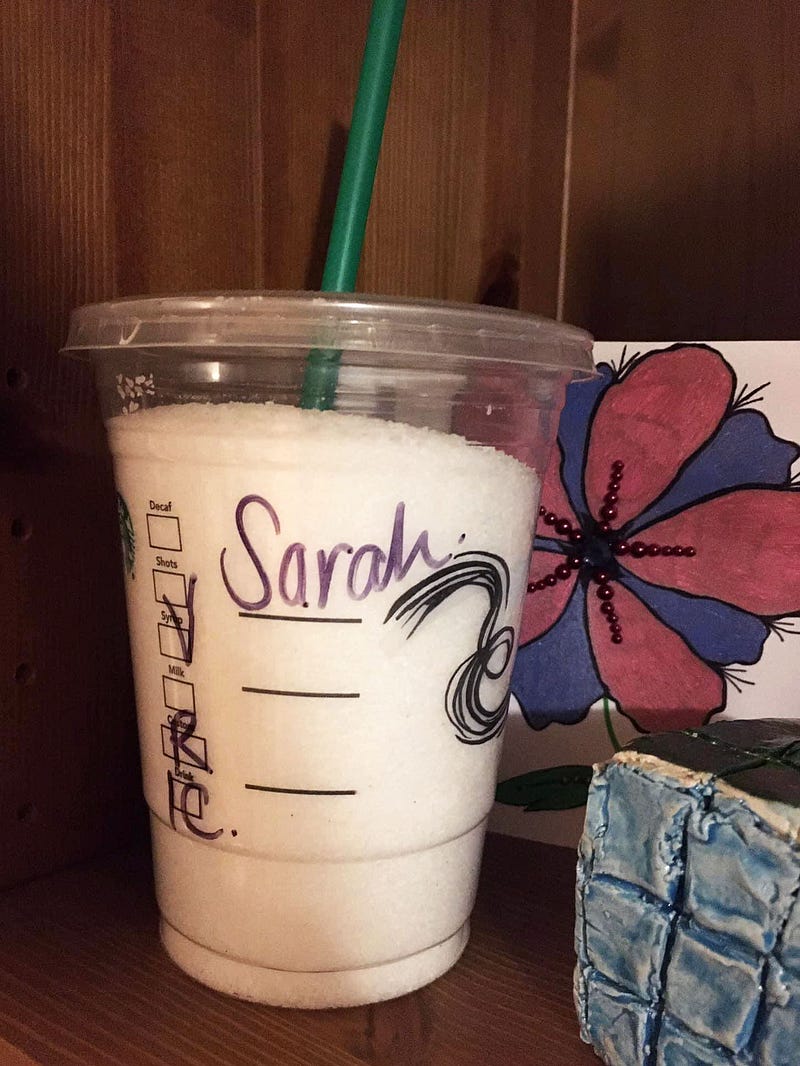
In the U.S., 1.4 million adults and 150,000 youth identify as transgender, according to a study by the Williams Institute. Many of these people go by a different name than the one they were assigned at birth.
Elayne Wylie, co-executive director of the Gender Justice League, stressed that for transgender and nonbinary people, names are linked with pronouns and therefore linked to being perceived by others as the correct gender, which is known as “passing” in transgender and nonbinary communities.
The Gender Justice League is a diverse collection of transgender activists and advocates that was founded in 2002 as a peer support group. After functioning as a support group for a while, they saw the need to do more, Wylie said. Since then, they have produced Trans Pride Seattle, a safe space for transgender and nonbinary people in Washington to connect that is usually held the same weekend as Seattle Pride. The league advocates for housing rights and employment equity, and they ran a series of three name-change clinics in 2016 and 2017 — in between election day and inauguration day.
For Mayes, producer and co-host of the podcast By the Sound and a transgender woman, the name “Sarah” was the name that belonged to her, not the one she was given at birth. She knew the name was right, even before she knew she was transgender.
“I didn’t understand I was trans. I knew I felt like I should be a girl. I know I wanted to be a girl,” Mayes said. “But being raised in the deep south and the Mormon church, those notions were beaten out of me pretty quickly.”
Mayes remembers the day when the name “Sarah” came to her when she was around five years old. While visiting with her grandmother one day, she met a girl named Sarah for a playdate as her grandmother and the other girl’s mom visited.
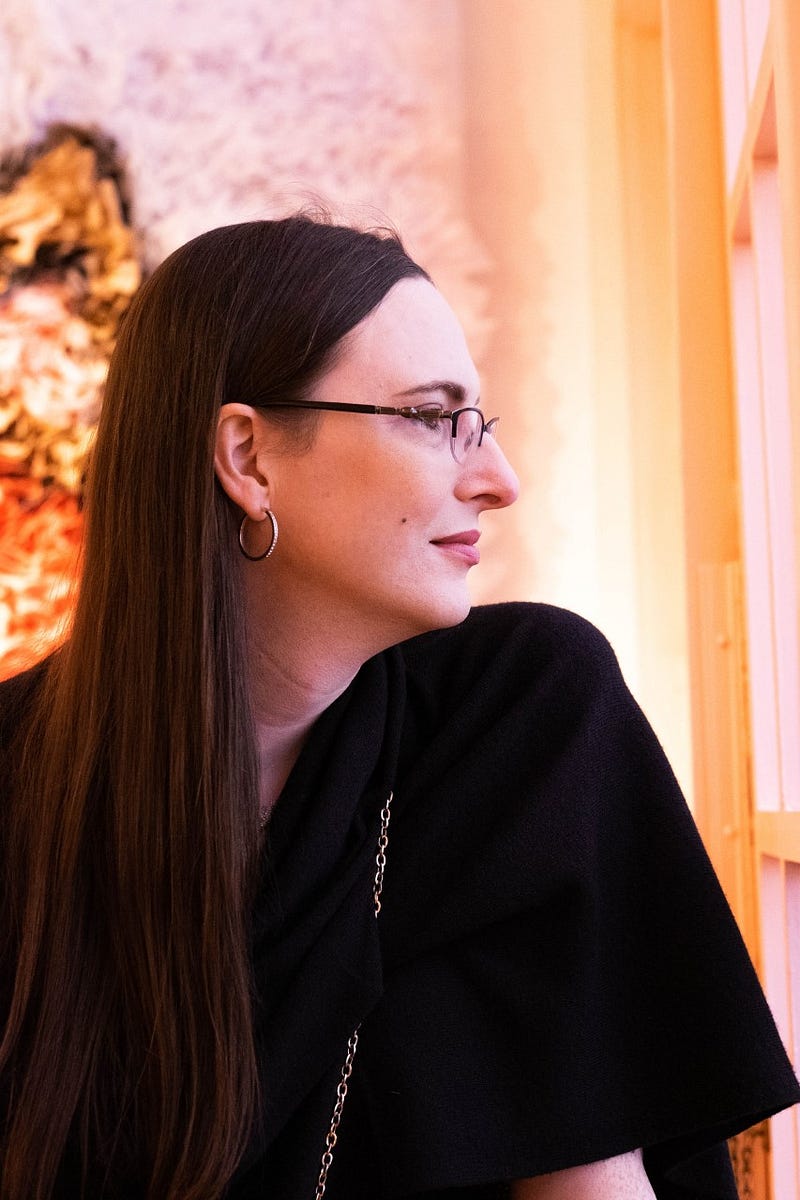
“I just remember thinking, ‘That’s supposed to be my name,’” Mayes said. “That should be my name.”
The feeling she got wasn’t outside the bounds of envy or jealousy because she was still a child and didn’t have many categories for emotions, she said. But she had a strong feeling that the name she was hearing was hers.
“It was the playdate that never left me,” Mayes said. “The name was always there.”
Dr. Johanna Olson-Kennedy, medical director for the Center for Transyouth Health and Development at the Los Angeles Children’s Hospital, and collaborating researchers include exploring the impact of societal and structural changes, such as legal name changes, as one of the priorities for future research on transgender and gender-nonconforming people. In a later study, Arjee Restar, a postdoctoral research fellow at Johns Hopkins Bloomberg School of Public Health, and other researchers found a significant association between legal gender affirmation and lower reports of mental illness and gender-based discrimination.
Andrew Bentley, a student at Bellingham High School and a member of the school’s Queer Straight Alliance club, also found his name through a person in his childhood. Bentley, who got the name “Andrew” from his dad’s best friend, felt the same way about his name as Mayes did about “Sarah.”
“I always felt like it was my name,” Bentley said. “It just sounded right.”
Andrew is his true name, Bentley says. Additionally, his father’s friend who also had the name “Andrew” has now passed away, so for Bentley, it is important that he is honoring someone so important in his father’s life.
Mayes said her mind is very scientific and that she is not spiritual, so on one hand she dismisses the idea of “true names.” To her, it’s all arbitrary, and a name is a tool for bureaucratic ordering.
“On the other hand, my name, which I felt was mine and which ultimately I gave myself, the name ‘Sarah Ophelia Mayes,’ feels very much like it’s my true name,” Mayes said.
However, being skeptical of herself, Mayes said that if she gave the concept any thought it seemed ridiculous.
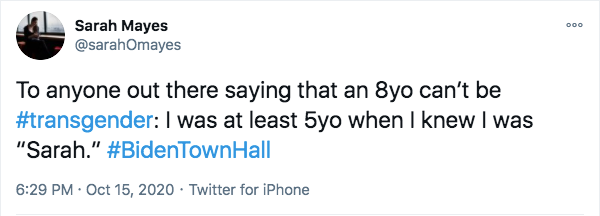
In his book “Cratylus,” Plato explores the idea of true names. The book opens with two characters, Cratylus and Hermogenes, arguing whether each thing, person and place, has one true name. Cratylus believes that each person has one, and only one, naturally correct name. The fact that they may be or may have been called a different name is inconsequential.
Hermogenes disagrees. He believes names are a human imposition on the world. This is similar to Mayes’ belief that names are just an agent of bureaucratic process. However, her belief that “Sarah” is her correct name fits with Cratylus’ argument. As does Bentley’s feelings about the name “Andrew.”
It doesn’t matter whether or not a transgender or nonbinary person’s chosen name is their true name, they still may face discrimination if the name on their ID card doesn’t match their gender presentation. According to the 2015 U.S. Transgender Survey, 32% of respondents were verbally harassed, denied service or benefits, asked to leave or assaulted when they showed their ID card and the name didn’t match their gender presentation.
In order to be an effective accomplice to marginalized groups, people have to take risks and potentially make themselves uncomfortable, Wylie said. She differentiates this from allies, who are people who are staying safe with their support and not putting themselves into possibly harmful situations in order to truly support the transgender and nonbinary communities. She said the word “accomplice” makes some people uncomfortable, which is part of the point. People shouldn’t be comfortable with their privilege.
One of Bentley’s experiences at a Bellingham Pride Parade highlights the need for advocates or accomplices who go past just support, and will take action. As with most pride parades, the parade Bentley went to had people holding homophobic signs. One of these people started harassing him and calling him names, Bentley said. A bystander spoke up, telling them to stop and pointing out that Bentley was a child. Bentley said that moment showed him that people actually care.
“I just remember thinking, ‘That’s supposed to be my name,’ That should be my name.” — Sarah Mayes
Other than transphobia, Wylie said one of the biggest obstacles in her name change and transition was the overly complicated bureaucratic process.
Mayes describes her transition as a complex choreography. At work, she would be using a new name and a new bathroom in a very public space. Additionally, she had been completely closeted to most of her coworkers before her name change and during the legal process of changing her name. The Gender Justice League has resources to help people navigate difficult transitions in the workplace. Even outside of the workplace, Mayes’ early years of transition were hard.
“It was an alienating experience,” she said.
For many transgender women, passing as a woman early on in their transition is practically impossible, Mayes explained. For her, that was why the Starbucks cup with “Sarah” written on it was so important. The barista didn’t ask questions or extend any more cruelty to Mayes, she simply smiled and wrote down the name Mayes gave her.
Mayes couldn’t control how people in public reacted to her, but her choreography helped her navigate the bureaucratic process of legally changing her name. She got her name and gender marker legally changed and communicated the change with her work within two weeks. Going into her boss’ office and explaining the change was one of the most terrifying things in her life, she said.
Wylie had a different experience. She said she wasn’t working a great job at the time and had to wait months to get her name legally changed.
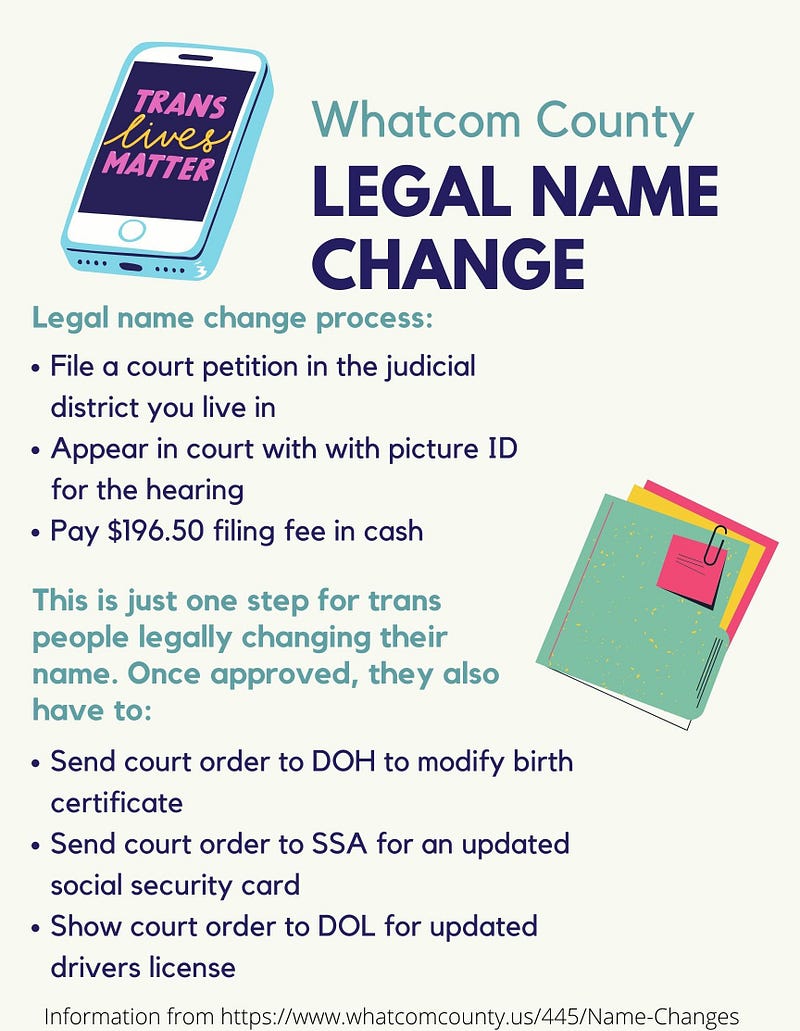
The 2015 U.S. Transgender Survey reported that, in Washington, cost was the main barrier transgender and nonbinary people faced when getting their name legally changed. The survey found that 32% of respondents didn’t change their legal name, and 30% of respondents didn’t change the gender marker on their IDs because they couldn’t afford it.
“How do I put $130 aside?” Wylie asked herself while trying to save up money. “What do I not eat this month? What do I not do this month?”
She ended up living off instant ramen for a while.
Wylie pointed out that none of the systems in the government, in businesses and in social situations, were built for transgender, nonbinary or intersex people. She used the example of the system that the hospital she worked at ten years ago used. Wylie was forced to file a grievance in order to create an option to change gender markers and names.
“They’ve all had to be amended,” Wylie said about the hospital system, as well as larger government, economic and social systems. “Duct taped together. Rolled in scotch tape with a shitty coat of paint in order to make it look okay.”
Only about 21% of transgender and nonbinary people have been able to update all of their IDs and records, such as their driver license, credit cards, leasing documents and more, due to how time-consuming and expensive the legal name change process is, according to the National Center for Transgender Equality.
Bentley, who transitioned as a teenager, had a different experience but similar feelings.
“When I was being called by [my] deadname it wasn’t me,” Bentley said.
A deadname is the name that a transgender or nonbinary person was given at birth and no longer uses after transitioning, according to the Merriam-Webster Dictionary. When a transgender or nonbinary person is called by their deadname it can be an invalidating experience that causes feelings of gender dysphoria. Gender dysphoria is the conflict between a person’s gender identity and the gender they were assigned at birth that causes feelings of discomfort or distress, according to the American Psychiatric Association.
Bentley still gets deadnamed, and people in public will still assume that he is a girl. He said the high school he attends is a safe space for queer students and there are supportive teachers, but he still struggles with people who knew him before he transitioned who call him by his deadname.
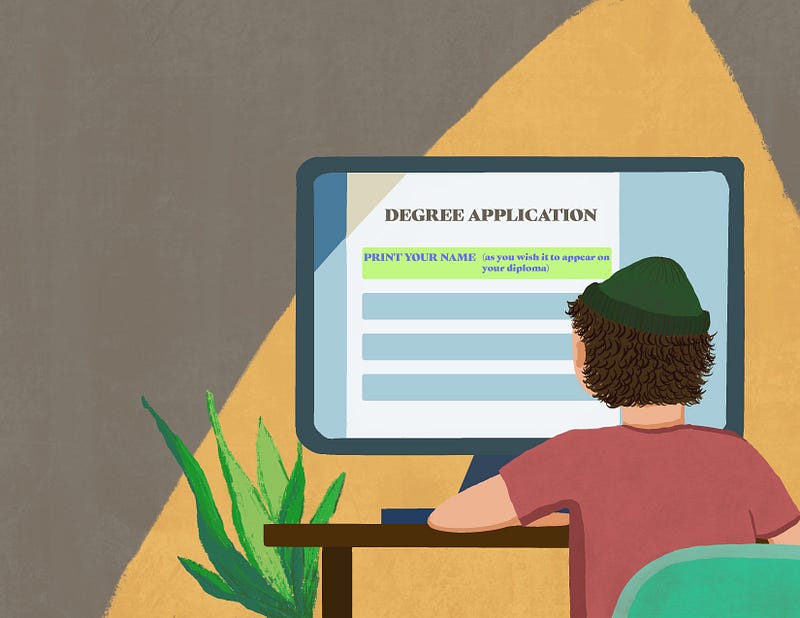
“It makes me think badly of myself because this is not who I am anymore. That’s not me,” Bentley said. “I am me now and I don’t want to be the past me.”
The Queer Straight Alliance club at the Bellingham High School is still advocating for the rights of queer students. They are trying to normalize introductions with pronouns and making sure teachers will know the students’ chosen names. One problem they are currently facing is the lack of gender-neutral locker rooms for Bellingham High School students.
Faculty advisor of the Queer Straight Alliance and Bellingham High School teacher Dani Irwin said there is always more work to be done. However, she is grateful that the school’s administration acknowledges there are still problems and are willing to work with the club.
District media liaison, Dana Smith, pointed out that Sehome High School was just rebuilt with a gender-neutral changing room. Smith and Irwin said the district is slowly making changes to support diversity, but changes such as building a new bathroom take time and money.
“Our work has to be both social and systemic,” Wylie said “We have to address the systems and we have to address the human beings who don’t know how to challenge or change those systems.”
While the Gender Justice League’s series of name-change clinics was a one-time thing, Ingersoll Gender Center and the Lavender Rights Project both have resources available for transgender and nonbinary people who need help with navigating these systems and the name change process.
Even now, years after she has transitioned, Mayes says that hearing the name “Sarah” used is validating and uplifting. She said, to this day, hearing people use her pronouns in a positive way has the same feeling. The support of the law office she worked at made her complex choreography slightly more simple. As she walked in the door the day after finishing the process of changing her name, her nameplate was already being changed to “Sarah.”
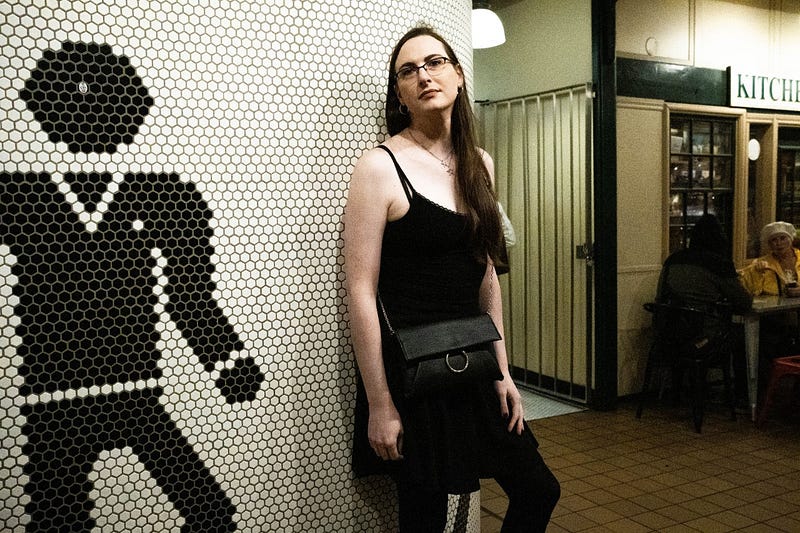
Mayes said that there’s no timeline for transgender and nonbinary people to grow into their true self. If they have a name that doesn’t feel right, they should sit with that for as long as they need. Take things one day at a time — she wants transgender and nonbinary youth to know that they don’t have to have the answers right now.
“Be patient. When it’s right it will feel right and you’ll know for sure that it’s right. You don’t have to do anything on anyone else’s timeline,” Mayes said. “Whether you’re talking about your name, or anything else.”
Related Coverage:
Podcast — To Those Who Named Us
Commentary — Infinite Ways to Be
